Freeway pollution travels farther than we thought. Here’s how to protect yourself
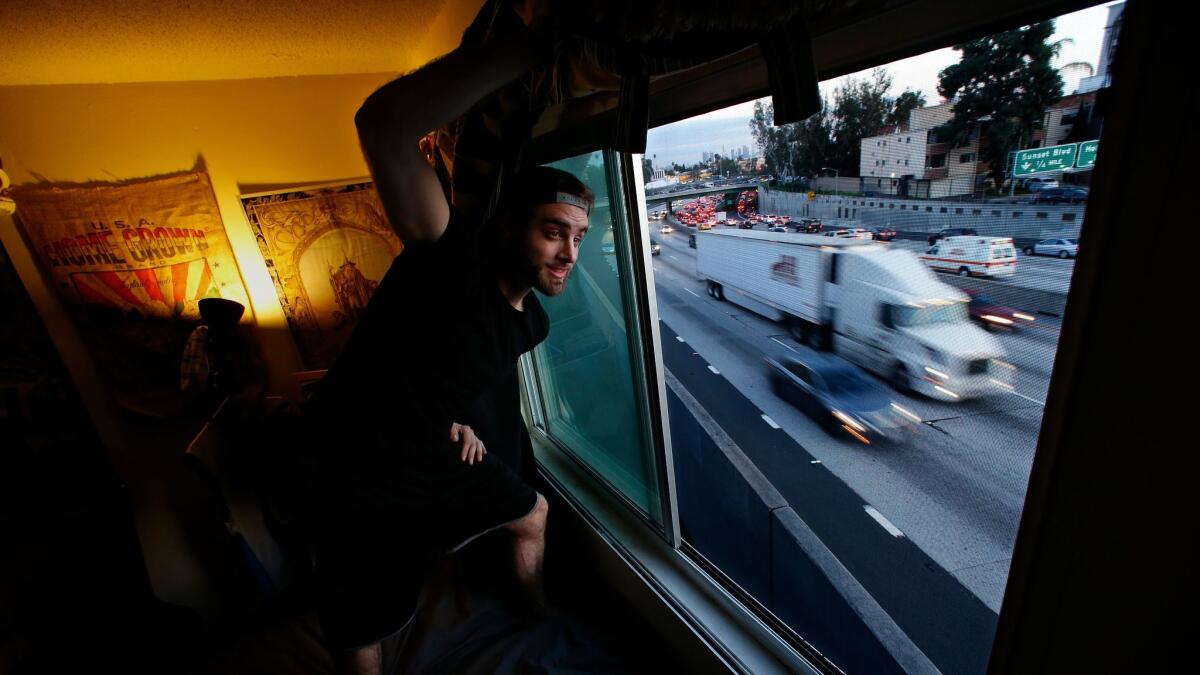
- Share via
If anyone knows where to find refuge from air pollution near Los Angeles freeways, it’s Suzanne Paulson.
The UCLA atmospheric chemistry professor has spent years studying how invisible plumes of dirty air from car- and truck-choked roadways spread into surrounding neighborhoods — increasing residents’ risk of cancer, asthma, heart disease and other illnesses.
So when she bought a home in the Sunset Park neighborhood of Santa Monica in 2007, she made sure it was on a quiet street far from the 10 Freeway — well beyond the 500-foot zone where California air quality regulators say it’s unhealthful to put homes, schools and day cares.
But it wasn’t far enough.
In the late night and early morning, it turns out, traffic pollution drifts much farther than during the day, and can extend more than a mile downwind from the freeway.
That discovery, made by Paulson and her colleagues, is one example of new research revealing how much your exposure to harmful levels of vehicle pollution is affected by your specific surroundings. It’s not only your distance from traffic, but other details such as wind patterns, freeway design, the time of day and the types of cars, trucks and buildings around you that determine the risk.
“We’re learning that the pollution you breathe comes down to where you are, when you’re there and what the traffic is like,” Paulson said.
Such findings are prompting new advice from air quality officials and scientists on steps you can take to protect yourself.
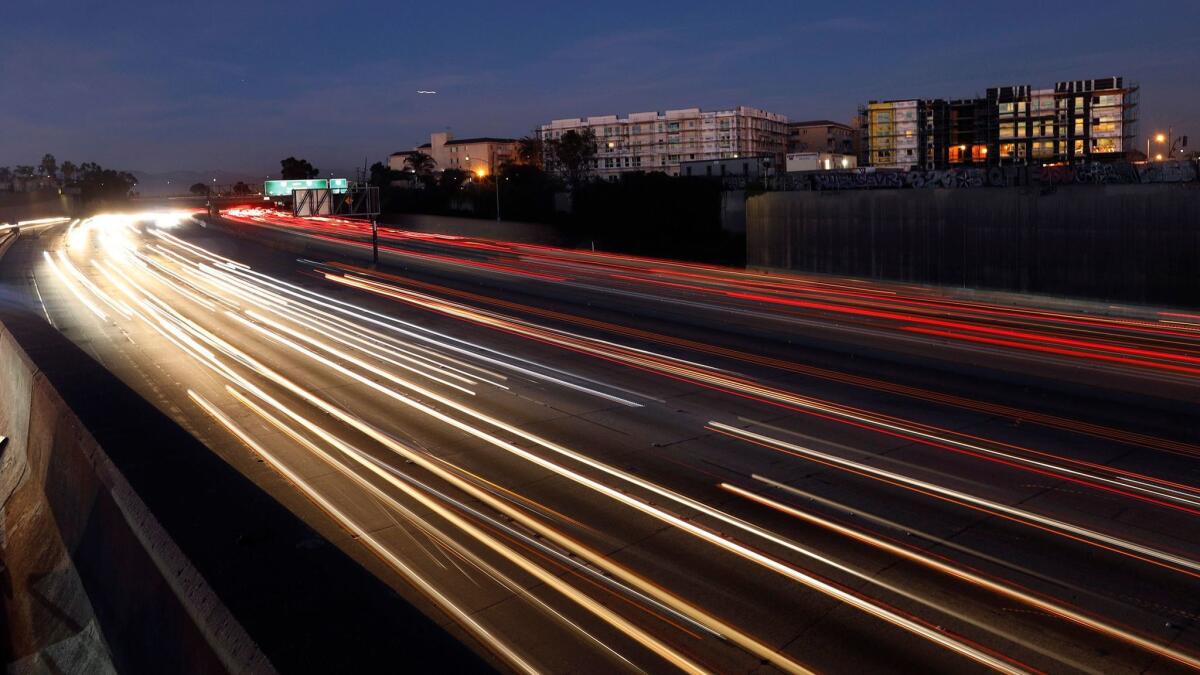
Keep your distance from freeways and busy roads
Southern California is experiencing a surge in home construction near freeways that is pushing more people into high-pollution zones. But just because state and local officials are allowing new housing there doesn’t mean it is safe, health experts say.
When choosing a home, school or day care, aim for locations as far from the freeway as possible.
Avoid sites within 500 feet — where California air quality regulators warn against building — or even 1,000 feet. That’s where traffic pollution is generally highest, along with rates of asthma, cancer, heart attacks, strokes, reduced lung function, pre-term births and a growing list of other health problems.
See how far you live from the nearest freeway »
Also avoid living near major roads — those carrying more than 100,000 vehicles a day — which, according to air quality regulators, can pose health risks similar to freeways. That includes stretches of some of Los Angeles’ busiest boulevards such as Sepulveda, La Cienega and Wilshire.
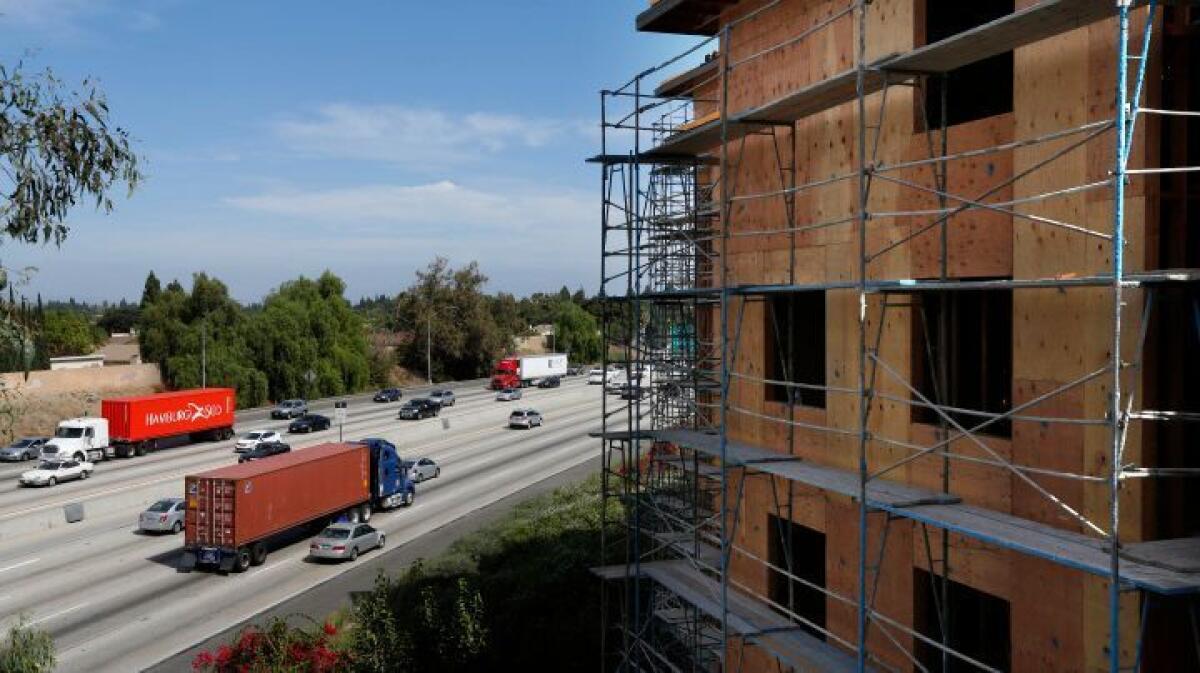
Use filters, but know the limitations
If you have a central heating, air-conditioning or ventilation system, install high-efficiency air filters. They should be rated 13 or higher on the 16-point industry MERV scale (Minimum Efficiency Reporting Value) that measures how effectively they block tiny pollution particles.
Make sure to replace them on schedule, about every few months.
But filters remove only some of the harmful ingredients in traffic pollution. And they’re effective only when the air is running and all doors and windows are closed.
Most will not remove toxic exhaust gases such as benzene and 1,3-butadiene. To screen those out, you need more costly charcoal filters.
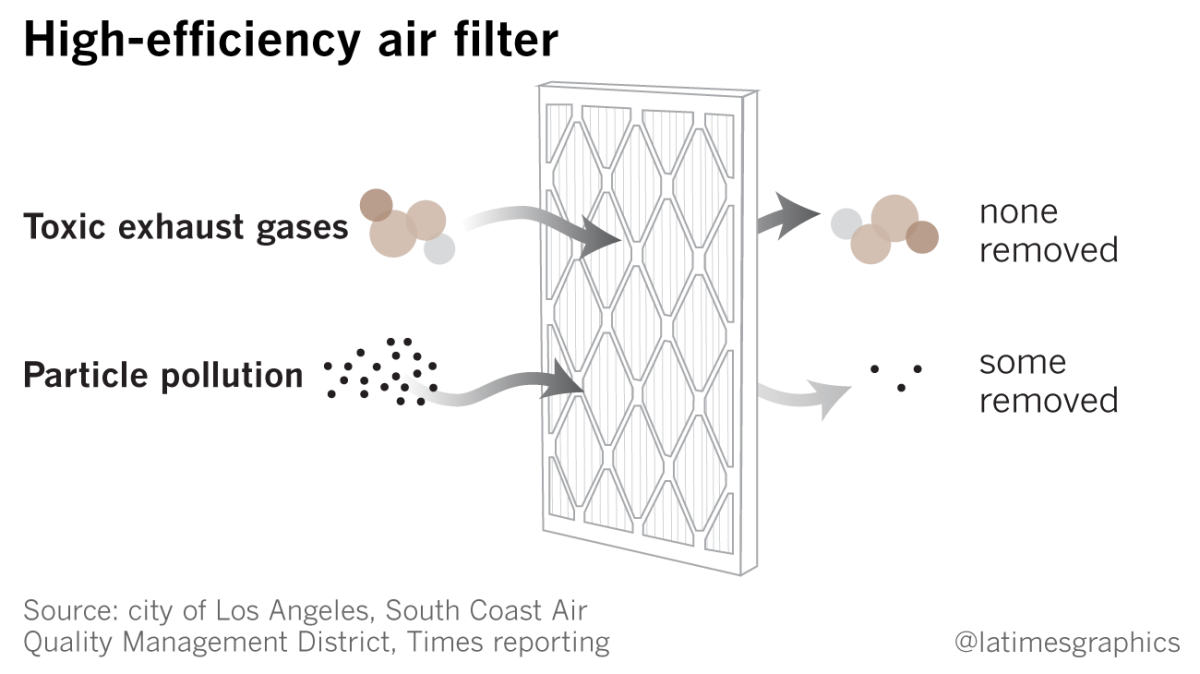
Also factor in the age of your building. Filters are less effective in older homes, which let in more pollutants, and work better in newer dwellings that seal off more outside air.
If you live in a new home near a freeway in Los Angeles or San Francisco, high-efficiency filters may already be required. And the California Energy Commission is moving to require MERV 13 air filtration in all newly constructed dwellings starting in 2020.
But those rules will do nothing to reduce pollution in existing homes, including those occupied by more than 1.2 million people in Southern California who already live within 500 feet of a freeway.
Don’t have central air? Adding one or two stand-alone air-cleaning devices to your home can help reduce particle pollution levels, so long as you keep them running 24/7. But air cleaners are effective at lowering particle levels only in a single room, not an entire home. Make sure the model you choose is certified by California regulators.
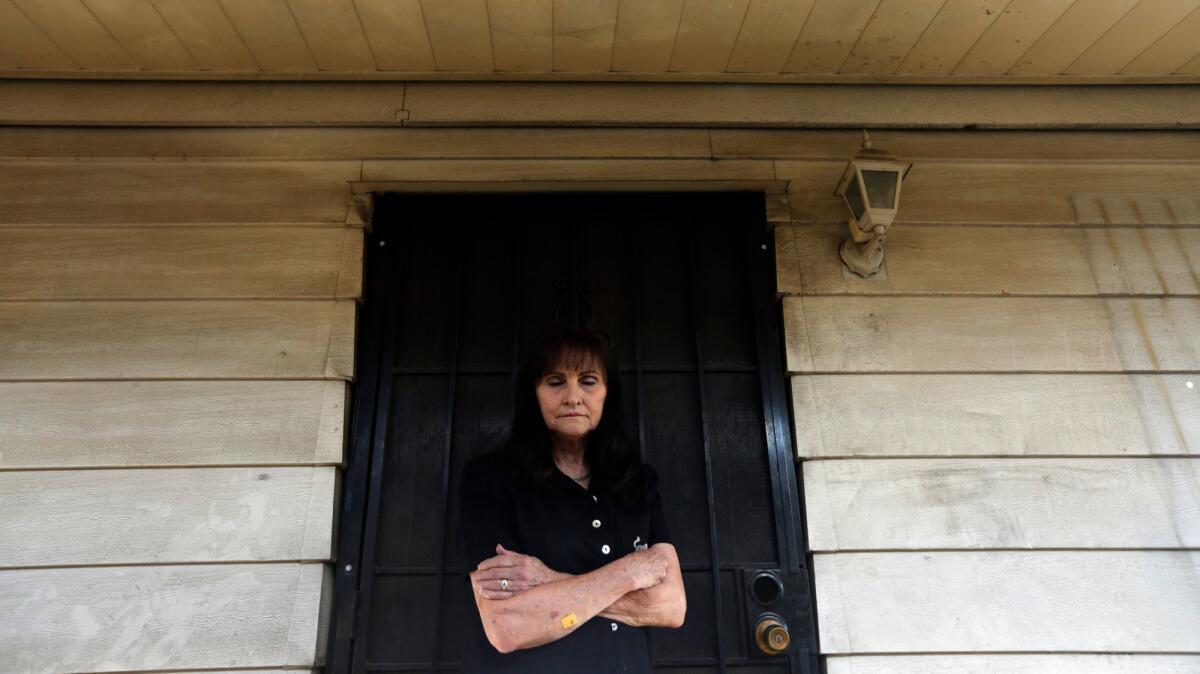
Find physical barriers
If you can’t avoid living near a freeway, some locations offer more protection than others.
It’s better to live behind a sound wall, especially one with thick trees and plants extending above it. Such obstacles, though not designed to block vehicle emissions, can reduce pollution levels immediately downwind.
It’s also preferable to live near a freeway that is elevated above or sits well below your home. That vertical separation can help disperse pollutants. At-grade freeways, where lanes sit at the same level as surrounding buildings, are worse because they put vehicle tailpipes right next to people’s lungs.
If you live on a major boulevard, you’re better off when there are buildings of varying heights, parks and other open spaces that allow allow exhaust pollutants to disperse up and away from traffic, state regulators say. Avoid “street canyons,” blocks with masses of tall buildings that can trap pollution.
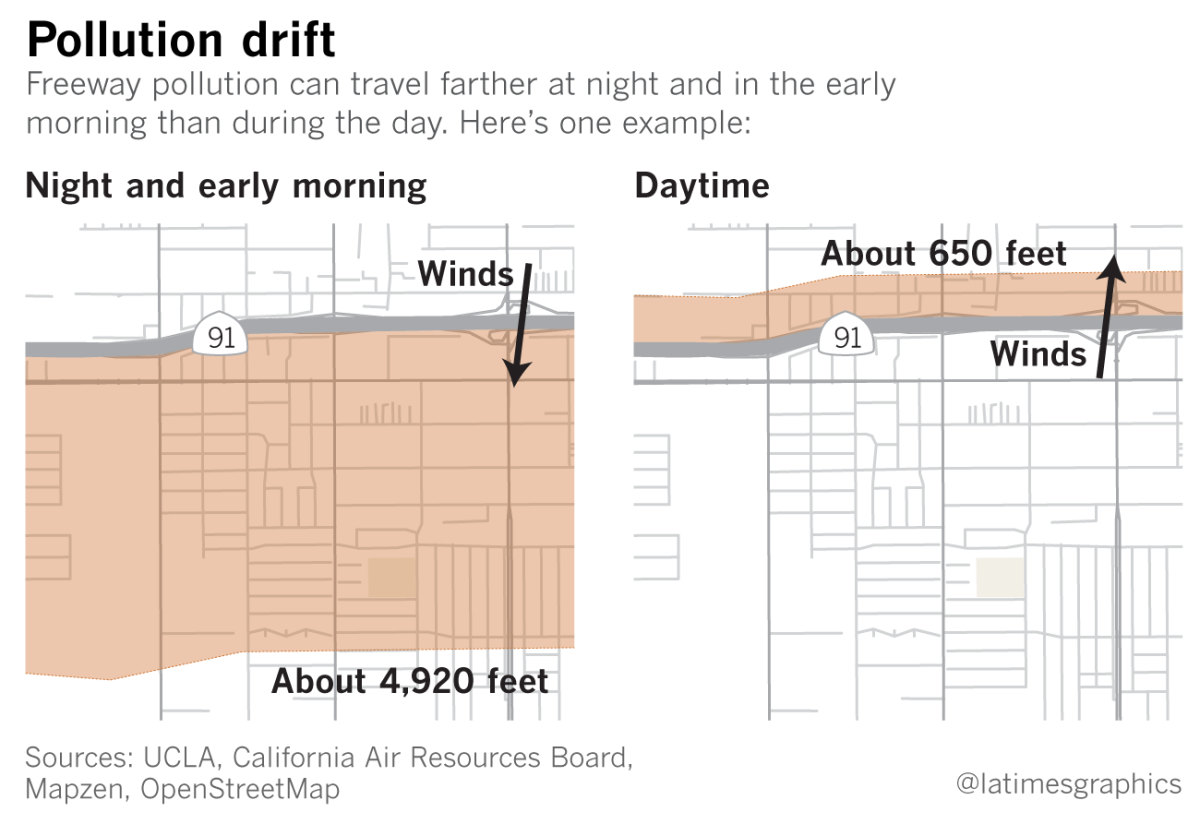
Avoid early morning exercise near traffic
Postpone outdoor exercise to later in the morning to dodge the spike in traffic pollution in the pre-sunrise hours. That’s when stagnant weather conditions, caused by nighttime cooling, trap freeway pollution near the ground. That slows down the dispersal of emissions, allowing them to drift more than a mile downwind, compared to no more than 1,000 feet during the day.
Levels of ultrafine particles, nitric oxide and hydrocarbons are highest in the early morning, aided by a big injection of exhaust from morning rush hour. Those conditions usually break up once the sun has been up for a few hours and winds pick up again.
It’s also better to keep your windows closed in the early morning hours. You may think it’s safer to leave them open after traffic dies down at night, but recent research suggests the opposite.
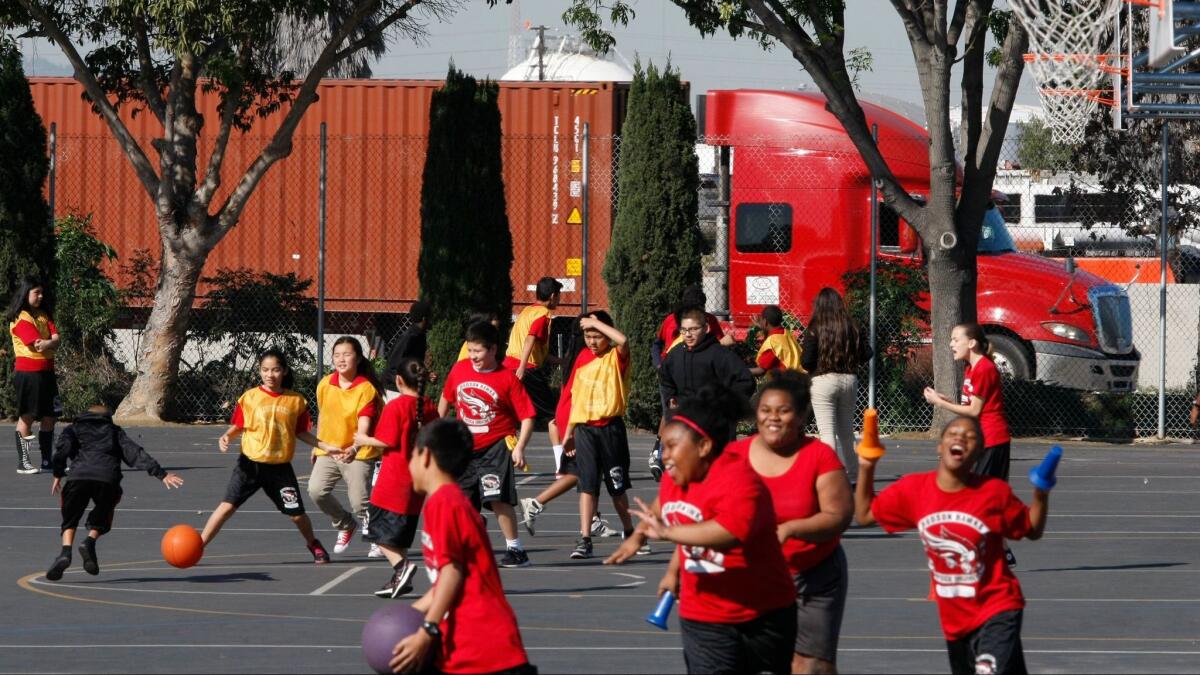
Drive less, and use the 'recirculate' button
Spending time in a car on the freeway can expose you to pollution levels five to 10 times higher than surrounding areas.
Even with the windows up, you could be breathing up to 80% of the levels of pollution found in traffic if your vehicle’s ventilation system is drawing in outside air.
So if you can, live closer to work, use public transit or take other steps to limit your driving time.
“That’s where we still get a big, big share of our exposure, especially if you’re driving very far in rush-hour traffic,” said Scott Fruin, a professor of preventive medicine at USC. “If you can reduce that, it helps a lot.”
When you’re in the car, roll up the windows and set your ventilation system to recirculate. That button can cut pollution to 20% of on-road levels.
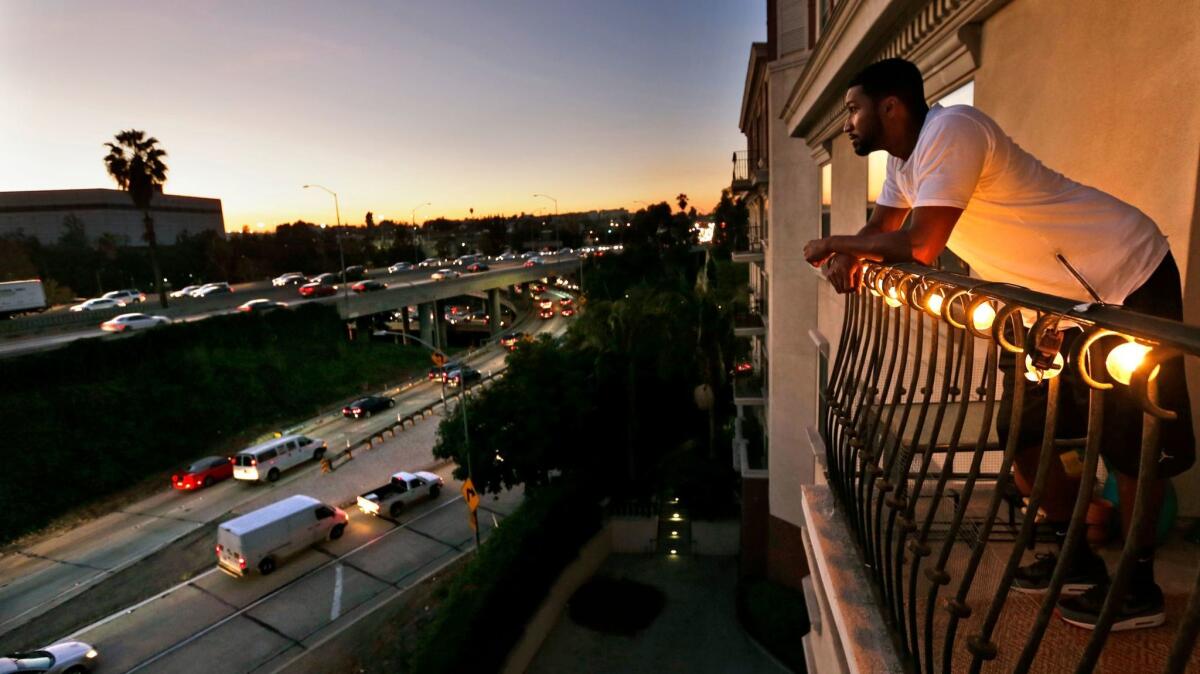
Stay away from interchanges, intersections and other hot spots
The risk to your health can be compounded if you live near multiple pollution sources. Avoid living close to highway interchanges and freeway ramps, which regulators and scientists have identified as hot spots that can hit residents with twice as much as pollution.
Keep away from major intersections and stoplights, where vehicles spit out a lot of exhaust when drivers step on the gas, and copper dust and other toxic particles when they hit the brakes.
“There’s basically a big cloud of fairly concentrated pollution when the light turns from red to green,” Fruin said.
Also factor in whether you live in a smoggy area. If you live near a freeway in a community with higher smog levels, like the Inland Empire, you could get a double dose of dirty air from traffic emissions piling on top of regional pollution.
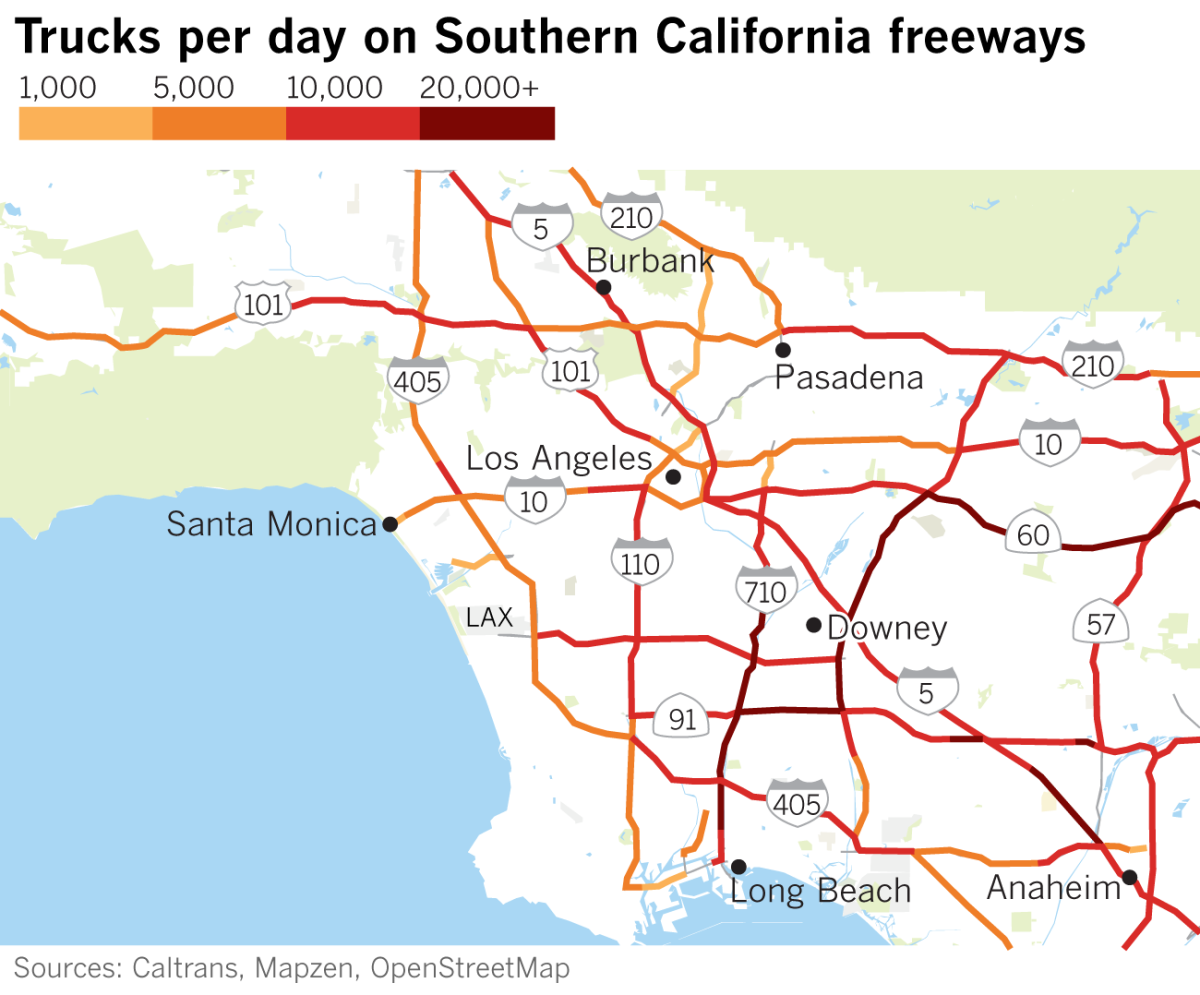
Avoid truck routes and the ‘diesel death zone’
It’s especially unhealthful to live near freeways and roads frequented by diesel trucks, which spew many times more harmful gases and particles than cars. Diesel particulate matter, carcinogen-laden soot that deposits deep in the lungs, is responsible for the bulk of the cancer risk from air pollution and more than 1,000 early deaths a year in California.
Experts are most concerned about people living near ports, warehouse distribution centers and other freight corridors. Asthma rates and cancer risk there can be so elevated that physicians have labeled it the “diesel death zone.”
An air-monitoring station next to a truck-congested stretch of the 60 Freeway in Ontario had the highest levels of fine-particle pollution, or soot, of all near-roadway sites in the nation, according to 2015 U.S. Environmental Protection Agency data. About 217,000 vehicles a day passed by in 2015, more than 29,000 of them trucks.
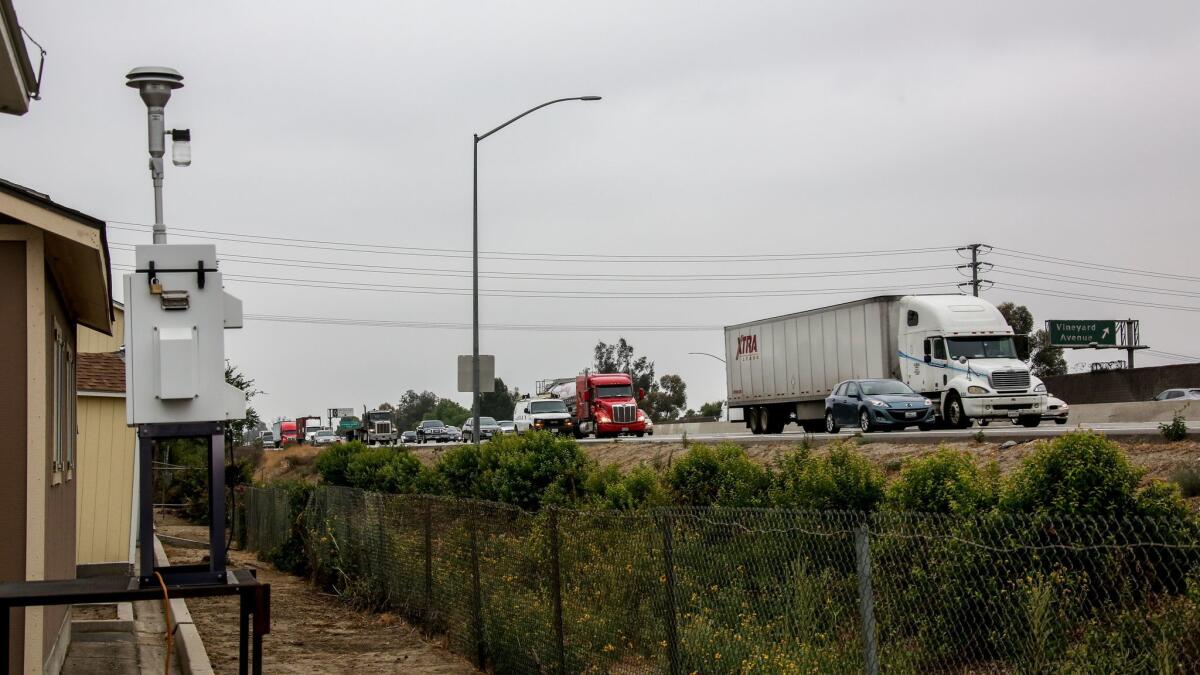
Be aware of the type of vehicles in your neighborhood
The kinds of vehicles traversing your neighborhood can have a big effect on how much pollution you breathe.
Paulson and other scientists have detected huge disparities among L.A. neighborhoods, with some of the lowest levels of traffic pollution in wealthier enclaves such as West Los Angeles, where the roads have more new cars with cleaner engines, and fewer trucks.
Levels of ultrafine particles, the tiny, short-lived particles scientists measure as an indicator of recently emitted exhaust, are several times higher over in the Eastside neighborhood of Boyle Heights, which in addition to being carved up by a freeway interchange has more diesel trucks and older, higher-polluting cars on its surface streets.

Clean the dust, but worry more about the pollution you can't see
The black road dust that deposits on the windows, shelves and patios of people living near traffic? If it’s big enough to see, it probably can get into your mouth or nose, and not much farther than that.
Clean it up, especially if it’s dark or sooty in color, said Fruin, the USC professor. “If you run your finger on your windowsill and it’s black, that’s a bad sign because it means you’re getting a lot of diesel soot.”
More important, soot can be an indication of traffic pollution you can’t see but may be breathing in. Scientists are especially concerned about ultrafine particles, exhaust pollutants less than one-thousandth the width of a human hair. They’re so tiny they can lodge deep in the lungs and move into bloodstream, where they may harm the heart, brain and other organs.
Ultrafine particles are suspected of causing some of the illnesses among people living near traffic, but more research is needed to say for certain.
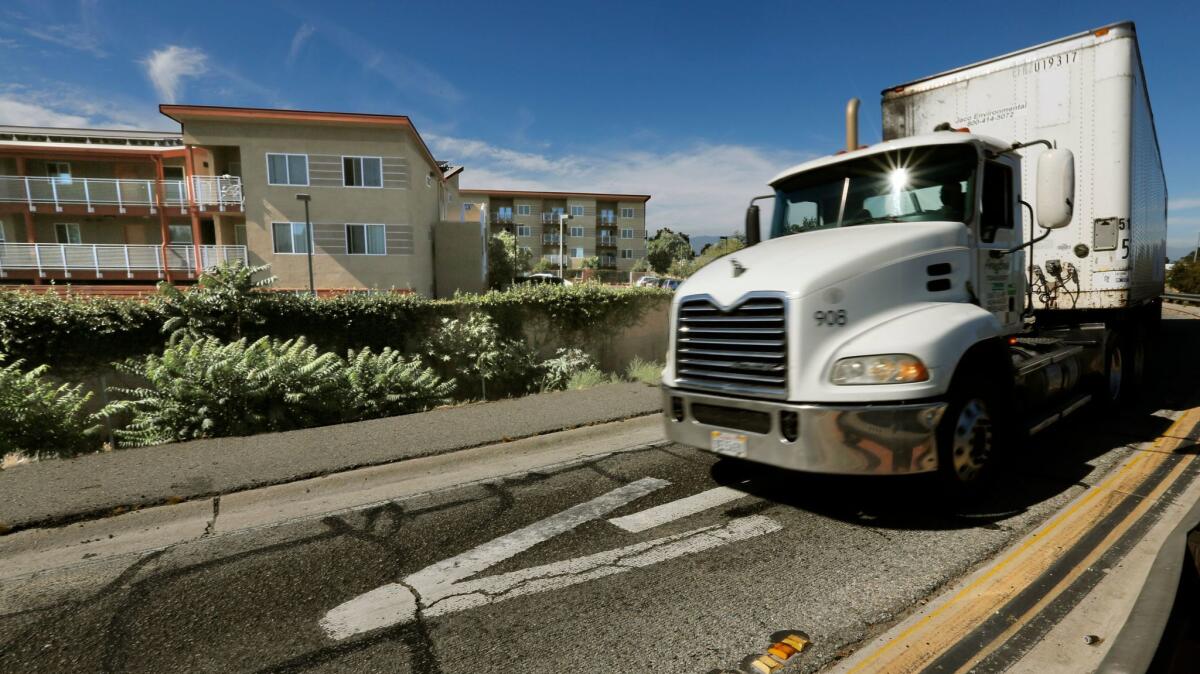
Don't count on electric cars to eliminate the problem
Cars and trucks keep getting cleaner, but don’t count on electric vehicles bringing an end to traffic-related health problems.
Switching to zero-emission vehicles only gets rid of tailpipe-generated pollution. It does nothing to reduce non-exhaust pollutants, including dust from brake pads and tires that contains toxic metals, rubber and other compounds that are kicked up into the air.
Scientists trying to pinpoint the most harmful agents in traffic pollution are just beginning to study the health effects of those non-tailpipe pollutants.
“The switch to electric vehicles will certainly reduce the public’s exposure to engine-related emissions,” said Ed Avol, a professor of preventive medicine at USC. “But this other kind of pollution generated by the frictional forces of tires and brakes and from lubricating oils is likely to remain in some form for years to come.”
Times staff writer Jon Schleuss contributed to this report.
Sign up for Essential California
The most important California stories and recommendations in your inbox every morning.
You may occasionally receive promotional content from the Los Angeles Times.








